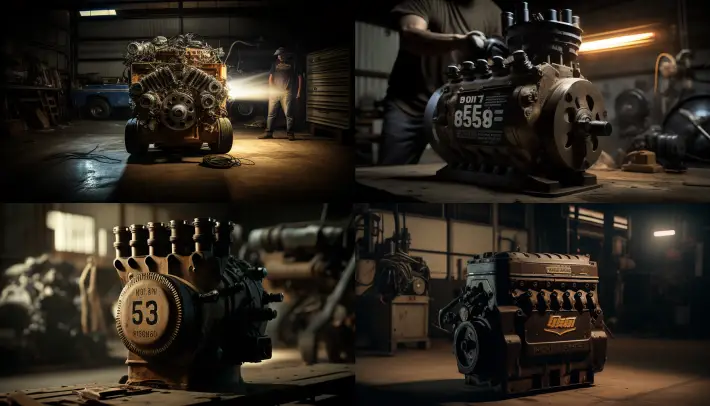Dodge Ram 1500 Overdrive Problem: Avoid Costly Repairs
Are you struggling with overdrive issues in your Dodge Ram 1500? You’re not alone. This common problem can be both frustrating and costly if not addressed. In this guide, we’ll cover:
- Common causes of Dodge Ram 1500 overdrive problems
- How to diagnose these issues
- Trouble codes you might encounter
- Steps for fixing the problem
- Preventive maintenance tips
Stay tuned to find out how to tackle your Dodge Ram 1500 overdrive problem head-on.
Common Causes of Dodge Ram 1500 Overdrive Problem
Understanding the root causes of overdrive issues in your Dodge Ram 1500 is the first step to resolving them. In this part of the guide, we dive into the most frequent culprits behind these frustrating problems.
Low Transmission Fluid Levels
Consequences of Low Fluid Levels
Low transmission fluid is often the simplest yet most overlooked reason for overdrive issues. When the fluid level is low, the transmission can’t work efficiently, leading to erratic behavior like slipping gears or overheating.
How to Spot It
Usually, a warning light on your dashboard will alert you. However, it’s a good practice to manually check the fluid level using the transmission dipstick under the hood.
Dirty or Worn Transmission Fluid
Impact on Transmission Components
Dirty or degraded transmission fluid can compromise the performance of your vehicle. It can lead to poor lubrication and cooling, causing increased wear and tear on internal components.
How to Spot It
If your transmission fluid is no longer a bright red but is brown or even black, it’s time for a change. A foul smell is another indicator.
Faulty Transmission Solenoid or Sensor
Role in Shifting
The solenoids and sensors in your transmission control the flow of fluid, which in turn controls the shifting of gears. A faulty solenoid or sensor can cause your vehicle to shift improperly or not at all.
How to Spot It
The vehicle’s OBD-II scanner can identify solenoid or sensor issues. The scanner will generate a trouble code that corresponds to the specific problem, helping you pinpoint the faulty part.
Mechanical Failure in the Transmission
Possible Causes
Mechanical failures are usually the most severe and costly causes of overdrive problems. These can range from a worn clutch pack to a broken torque converter or a damaged input/output shaft.
How to Spot It
Signs of mechanical failure often include audible noises when shifting, slipping gears, or a complete failure to shift. You’ll need a qualified mechanic for a complete diagnosis.
By understanding these common causes and their symptoms, you’ll be better prepared to diagnose and treat any overdrive issues you may experience with your Dodge Ram 1500.
How to Diagnose a Dodge Ram 1500 Overdrive Problem
Knowing how to properly diagnose an overdrive problem in your Dodge Ram 1500 can save you both time and money. Let’s go step-by-step through the diagnostic methods that can help you identify the root cause of your issue.
Visual Inspection
What to Look For
Start with a visual inspection of the transmission and its related components. Check for visible signs of wear, damage, or leaks. Any of these could be a sign of a larger issue that may affect the overdrive functionality.
Importance of Transmission Fluid Color and Texture
Pay special attention to the color and texture of the transmission fluid. A healthy fluid is typically bright red and free of any debris. Any deviation from this could indicate a problem.
Checking Transmission Fluid Level and Condition
Steps to Check Fluid Level
- Park your vehicle on a level surface and let the engine run for a few minutes.
- Put the transmission in Park and locate the transmission dipstick under the hood.
- Remove the dipstick, wipe it clean, and reinsert it to check the fluid level.
How to Interpret Results
If the fluid level is between the “Full” and “Add” marks, you’re good to go. A lower level indicates a need to add more fluid, while a higher level could mean overfilling, which is also not good.
Scanning for Trouble Codes
How to Use a Scan Tool
Connect a scan tool to the vehicle’s OBD-II port, usually found under the dashboard. Follow the scan tool’s instructions to perform a scan. This will show you any trouble codes related to your overdrive problems.
Performing a Road Test
What to Observe During the Test Drive
Take your Dodge Ram 1500 for a test drive and focus on the transmission’s behavior. Pay attention to whether the transmission shifts smoothly into and out of overdrive, any unusual noises, or if there are symptoms like slipping or shuddering.
How to Interpret Results
A smooth transition into and out of overdrive is a good sign. However, if you experience issues such as slipping gears or strange noises, it’s time to consult a professional mechanic for a more thorough diagnosis.
By following these diagnostic steps, you will be well-equipped to identify and start addressing any overdrive issues in your Dodge Ram 1500.
Common Dodge Ram 1500 Overdrive Problem Trouble Codes
When diagnosing overdrive problems in your Dodge Ram 1500, trouble codes can provide invaluable information. These codes are generated by your vehicle’s onboard diagnostic system and can point you to the specific issue at hand. Below is a table detailing common trouble codes and what they mean.
| Trouble Code | Description | Possible Causes |
| P0740 | Torque Converter Clutch Solenoid Malfunction | Faulty solenoid, wiring issues |
| P0748 | Pressure Control Solenoid ‘A’ Malfunction | Failed solenoid, electrical problems |
| P0750 | Shift Solenoid ‘A’ Malfunction | Solenoid failure, low fluid levels |
| P0753 | Shift Solenoid ‘C’ Electrical | Wiring issues, faulty solenoid |
| P0758 | Shift Solenoid ‘B’ Electrical | Electrical issues, solenoid malfunction |
| P0776 | Pressure Control Solenoid ‘B’ Malfunction | Damaged solenoid, electrical faults |
| P0785 | Shift/Timing Solenoid Malfunction | Timing issues, solenoid failure |
| P2700 | Transmission Friction Element ‘A’ Apply Time Range | Worn clutch plates, hydraulic problems |
| P2701 | Transmission Friction Element ‘B’ Apply Time Range | Worn clutch plates, hydraulic issues |
| P2702 | Transmission Friction Element ‘C’ Apply Time Range | Damaged friction plates, hydraulic malfunctions |
Understanding these codes can significantly help in troubleshooting the specific issue with your vehicle’s overdrive. However, for a more in-depth analysis, it’s recommended to consult a qualified mechanic.
How to Fix a Dodge Ram 1500 Overdrive Problem
After diagnosing the root cause of your Dodge Ram 1500 overdrive problem, the next step is to fix it. The complexity of the repair work will depend on the severity of the problem. Here we’ll explore both simple and complex fixes, providing specific examples to guide you through the repair process.
You can also check out the video:
Simple Fixes
Resolving Issues Due to Low or Dirty Fluid
Sometimes the issue can be as simple as low or dirty transmission fluid. These are usually easier and less expensive to fix.
Steps for Fluid Replacement
- Park on a Level Surface: Make sure the vehicle is parked on a level surface.
- Locate Drain Plug: Locate the transmission fluid drain plug.
- Drain Old Fluid: Place a drain pan under the plug and remove it to drain the old fluid.
- Add New Fluid: Once drained, replace the plug and add new transmission fluid through the filler tube.
Complex Repairs
Addressing Faulty Solenoids or Sensors
If the issue is more severe, like a faulty solenoid or sensor, you’ll need a more hands-on approach or professional help.
Rebuilding the Transmission
In the most severe cases, you might need to rebuild the transmission, which involves disassembling it to replace damaged or worn parts.
Specific Examples
Fixing Low Fluid Level Issues
- Check Fluid Level: Use the dipstick to check the fluid level.
- Add Fluid: If the level is low, add enough transmission fluid to reach the “Full” mark on the dipstick.
Addressing Dirty or Worn Fluid
- Check Fluid Condition: Observe the fluid’s color and smell.
- Replace Fluid: If the fluid is dirty or smells burnt, drain the old fluid and replace it with new fluid.
Replacing Faulty Solenoid or Sensor
- Identify the Faulty Part: Use your OBD-II scanner to identify the faulty solenoid or sensor.
- Replace the Part: Disconnect the electrical connector, remove the faulty part, and replace it with a new one.
Repairing Mechanical Failures
- Identify Damaged Components: This usually requires professional diagnostic equipment.
- Replace or Repair: Depending on the diagnosis, you may need to replace components or rebuild the transmission.
By following these guidelines, you should be able to tackle most overdrive problems you encounter with your Dodge Ram 1500. However, for complex issues, it’s always recommended to consult a qualified mechanic.
Preventive Maintenance to Avoid Dodge Ram 1500 Overdrive Problems
The best way to deal with overdrive problems in a Dodge Ram 1500 is to prevent them from happening in the first place. Let’s discuss some preventive maintenance tips that can help you extend the life of your transmission and avoid costly repairs.
Transmission Fluid Changes
Recommended Schedules and Conditions
Keeping your transmission fluid in good condition is crucial for the overall health of your transmission. Manufacturers generally recommend changing the transmission fluid every 30,000 to 60,000 miles. However, if you frequently tow or haul heavy loads, you may need to change it more often.
Load Management
Guidelines for Towing or Hauling Heavy Loads
Heavy loads can put extra stress on your transmission, leading to quicker wear and tear. Always refer to the manufacturer’s guidelines for towing and payload capacities for your specific model. Use the correct tow hitch and avoid overloading the vehicle.
Driving Behavior
Best Practices for Acceleration and Braking
Excessive acceleration or sudden braking can also stress the transmission. Being gentle with your driving habits can go a long way in prolonging the life of your transmission. Smooth driving reduces the workload on the transmission, minimizing the risk of overdrive problems.
Additional Tips
Importance of Cooling System Maintenance
A well-maintained cooling system can prevent your engine and transmission from overheating, another common cause of transmission problems. Check the coolant levels regularly and keep an eye out for leaks.
Regular Inspections by a Qualified Mechanic
Regular check-ups can catch potential issues before they become serious problems. A qualified mechanic can inspect your transmission and other critical systems to ensure everything is in good working condition.
By following these preventive maintenance tips, you can minimize the risk of facing overdrive problems with your Dodge Ram 1500.
Conclusion
So there you have it! Keeping your Dodge Ram 1500 in tip-top shape doesn’t have to be a headache. From watching your fluid levels to being mindful of how you drive, small steps can make a big difference. And if problems do pop up, now you’ve got the know-how to tackle them. Drive safe and keep those wheels turning smoothly!




